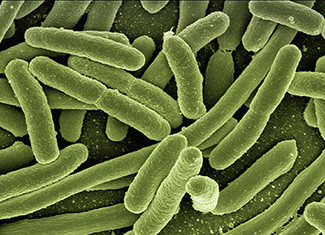When people think of air quality, their first thought is usually outdoor air. But did you know that indoor air quality can impact your health just as much, if not more?

In recent years, the Environmental Protection Agency and its Science Advisory Board have consistently ranked indoor air pollution among the top five environmental risks to public health. According to EPA studies, levels of indoor pollutants can be two to five times—and occasionally more than 100 times—higher than outdoor levels. Considering that most people spend around 90 percent of their time indoors, it’s prudent to try to improve our indoor air quality.
Exposure to indoor pollutants can trigger allergic reactions, worsen asthma symptoms, spread infectious illnesses like influenza, and even be fatal in some cases. Children, the elderly, and those with pre-existing breathing problems are particularly susceptible to these conditions.
Below are some ways to manage common indoor air pollutants.
Radon is a naturally-occurring gas created by the breakdown of uranium in soil, rocks, and water. It can leak into your home from underneath the foundation. You can’t see or smell radon, which makes it particularly dangerous, as it can cause lung cancer. Radon can be managed with the help of a qualified radon mitigation contractor, who will test your home’s radon levels and offer appropriate reduction methods.

Asbestos was commonly used in building materials and insulation in decades past, but by the 1980s and 1990s, was either severely restricted or banned outright. However, exposure to remaining asbestos fibers can still increase your risk of developing lung disease. If you think you might have materials containing asbestos, inspect them for wear or damage. For material with minor damage, you can limit access to the area and try not to touch or disturb it. If the material is more than slightly damaged, or if you’re planning to make changes in your home that might disturb it, use a trained and accredited asbestos removal professional to remove it.

Biological pollutants consist of pollens, mold, bacteria, viruses, pet dander, house dust, and insect parts. These contaminants trigger conditions like hypersensitive pneumonitis, allergic rhinitis, and some types of asthma.
You can prevent mold by controlling moisture and maintaining a low humidity indoors, ideally between 30 and 50 percent relative humidity. Fix any water leaks. Dry any wet or damp items within a day or two to prevent mold from growing. Consider hiring a professional to clean if you’ve had a sewage leak or water damage to any building materials in your home.
Reduce asthma triggers by doing simple tasks such as washing your bedding in hot water once a week, vacuuming carpets and furniture, dusting often with a damp cloth, and keeping pets outside, if possible. You can learn more by visiting the EPA’s site on reducing asthma triggers.
Use and properly maintain your ventilation system. Change your air conditioner filter as directed by the manufacturer.
Like radon, carbon monoxide is a colorless, odorless gas, created from the incomplete combustion of hydrocarbon fuels. Carbon monoxide interferes with the blood's ability to carry oxygen to the body's tissues and results in numerous adverse health effects, such as increasing the severity of lung ailments, dizziness, fatigue, nausea, and even death. Install a CO alarm and change the batteries as directed. Since CO can be deadly, don’t rely entirely on your alarm–familiarize yourself with the symptoms of carbon monoxide poisoning.

Secondhand smoke is also known as environmental tobacco smoke (ETS). ETS is an indoor air pollutant and a universal asthma trigger. ETS has also been classified as a Group A carcinogen under the EPA's carcinogen assessment guidelines. Don’t smoke in your home and don’t let anyone smoke near your children. Smoke outside or quit smoking altogether.
Formaldehyde is widely used in building materials. It can cause irritation of the skin, eyes, nose, and throat. High levels of exposure may cause some types of cancers. Mitigate formaldehyde emissions by purchasing composite wood products that comply with the standards set by ANSI/HPVA HP-1-2009 (for hardwood plywood), ANSI A208.1-2009 (for particleboard), or ANSI A208.2-2009 (for medium-density fiberboard).

Volatile organic compounds (VOCs) are gases emitted from certain common household products like paints, varnishes, and wax solvents. Many cleaning, disinfecting, cosmetic, degreasing, and hobby products also emit VOCs. The health effects can include eye, nose and throat irritation; headaches and nausea; and liver, kidney, or nerve damage. You can reduce your exposure to VOCs by increasing ventilation when using products that emit them. Don’t store open containers of paint within your home. Properly dispose of partially full containers of old or unneeded chemicals. Minimize your exposure to benzene by avoiding chemicals like fuels, paint supplies, and automobile emissions.